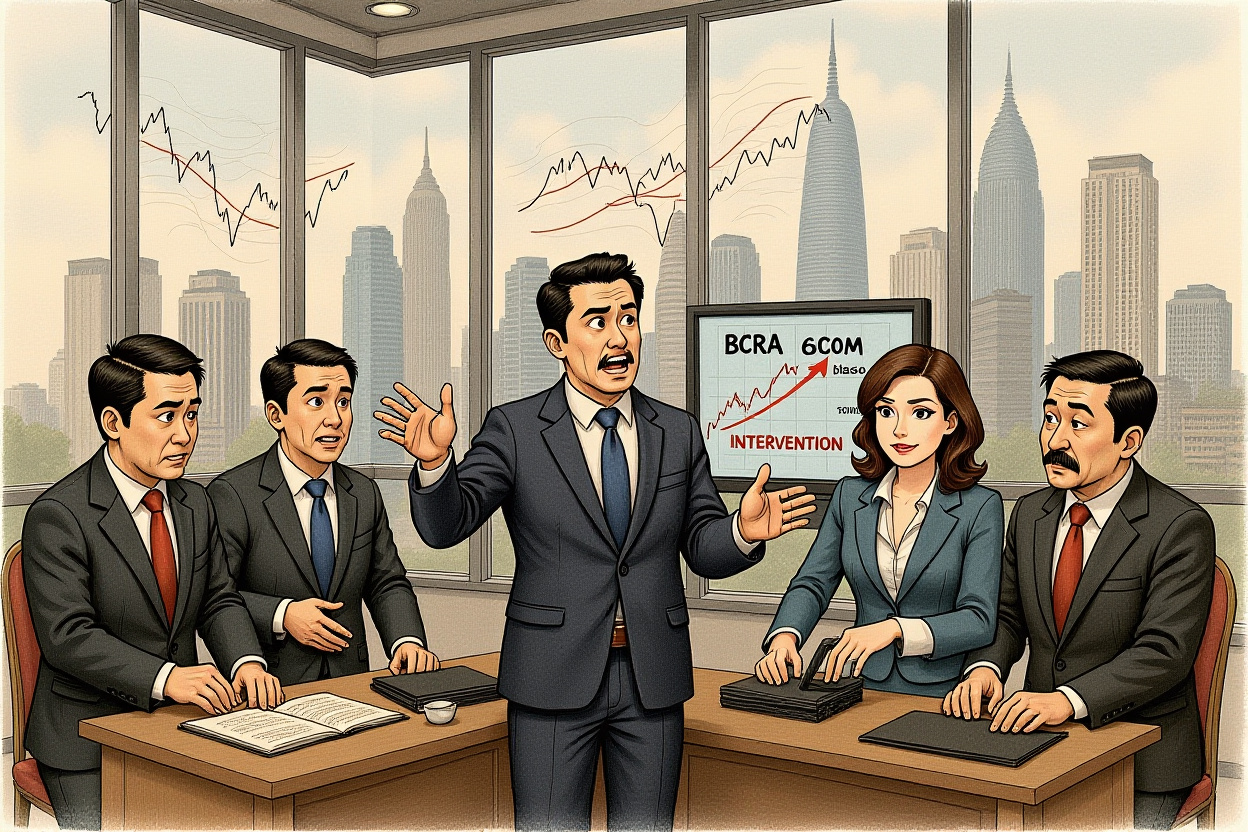Argentina’s Central Bank Executes Largest Single-Day Dollar Intervention Since 2019
Argentina’s central bank (Banco Central de la República Argentina) executed its largest single-day dollar sale in nearly six years on Friday, injecting $678 million into the market to stabilize the peso amid mounting political uncertainty. This aggressive move—part of a three-day $1.1 billion rescue effort—aims to reassure institutional investors increasingly hedging against volatility ahead of critical October midterm elections.
Intervention Scale and Market Context
The $678 million intervention marks the most significant single-day action since October 2019, highlighting the severity of current pressure on Argentina’s currency. Officials have committed to defending the peso at the upper bound of its floating exchange band, even as parallel black-market rates hit record lows of 1,520 pesos per dollar—a 6% weekly depreciation. Economic Minister Luis Caputo (路易斯·卡普托) stated unequivocally in a live interview: “We will sell every dollar in central bank reserves at the upper end of the band.”
Political Uncertainty Drives Investor Flight to Dollars
Rising skepticism among investors centers on Libertarian President Javier Milei’s (哈维尔·米莱) ability to secure congressional support after October’s elections. Market fears are compounded by Argentina’s history of currency crises, inflation surges, and debt defaults.
Election Impact on Reform Agenda
A poor showing by Milei’s party in recent local elections—viewed as a bellwether for October—has raised doubts about his capacity to advance reforms requiring legislative approval. Investor confidence has further eroded due to emerging corruption allegations within Milei’s inner circle and public discontent over cuts to health and education subsidies.
IMF Agreement and Reserve Depletion Risks
Argentina’s $20 billion agreement with the International Monetary Fund (IMF) in April initially allowed limited relaxation of currency controls. However, sustained intervention now threatens to rapidly deplete reserves.
Reserve Vulnerability and Debt Concerns
While net international reserves stand at $39.26 billion, analysts estimate that only about $6 billion is liquid and available for market intervention. At the current pace, reserves could decline by $10 billion before elections—approximately 70% of the funds already disbursed by the IMF. Experts warn that continued dollar sales could jeopardize short-term debt payments and force increased issuance of peso-denominated bonds.
Market Reactions and Indicators
Argentina’s country risk index—a key measure of investor confidence—rose to its highest level since August 2024, hovering around 1,500 basis points. Over-the-counter bonds fell an average of 1.4%, bringing weekly losses to 9.2%.
Parallel Market Divergence
The widening gap between official and black-market exchange rates underscores deepening distrust in official policy. The official wholesale rate closed at 1,474.75 pesos per dollar on Friday, near the upper limit of the band, while the parallel rate reached a historic low of 1,520.
Milei’s Economic Reform Agenda in Peril
President Milei’s initial success in reducing inflation below 100% and attracting foreign investment is now at risk. Market stability is crucial to maintaining public support for austerity measures and structural reforms.
Contrasting Early Optimism with Current Reality
Scotiabank’s Head of Capital Markets Economics, Derek Holt, noted that Milei is “burning through reserves at a frantic pace to prop up the free-falling peso.” Fixing the exchange rate at current levels, Holt warned, risks “returning the country to rampant hyperinflation—which Milei had promised to end.” The core of Milei’s reform agenda now faces its greatest challenge.
Conclusion: Navigating Uncertainty in Argentine Markets
Argentina’s currency crisis reflects broader structural issues—political fragmentation, dwindling reserves, and investor skepticism—that cannot be resolved through intervention alone. With October elections approaching, markets are likely to remain volatile. Investors should monitor central bank communications, IMF review outcomes, and political developments closely. Diversifying exposure and hedging currency risk are prudent strategies until clear signals of stability emerge. For real-time updates and regulatory announcements, refer to the Central Bank of Argentina’s official portal and the IMF’s Argentina program page.




